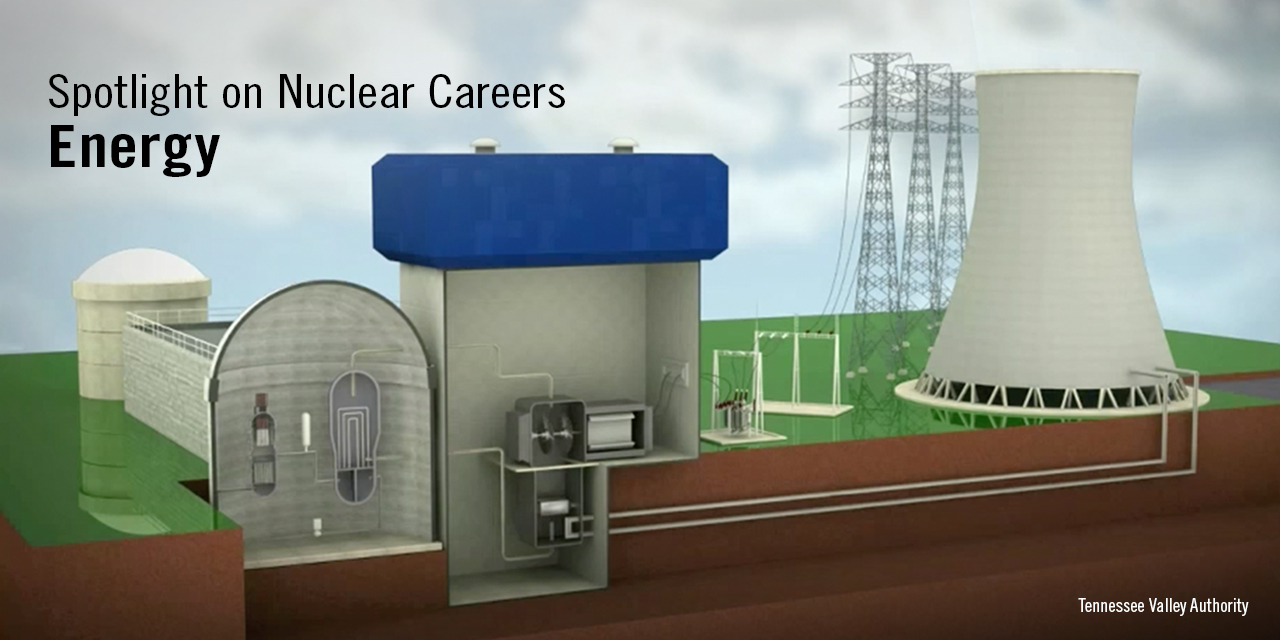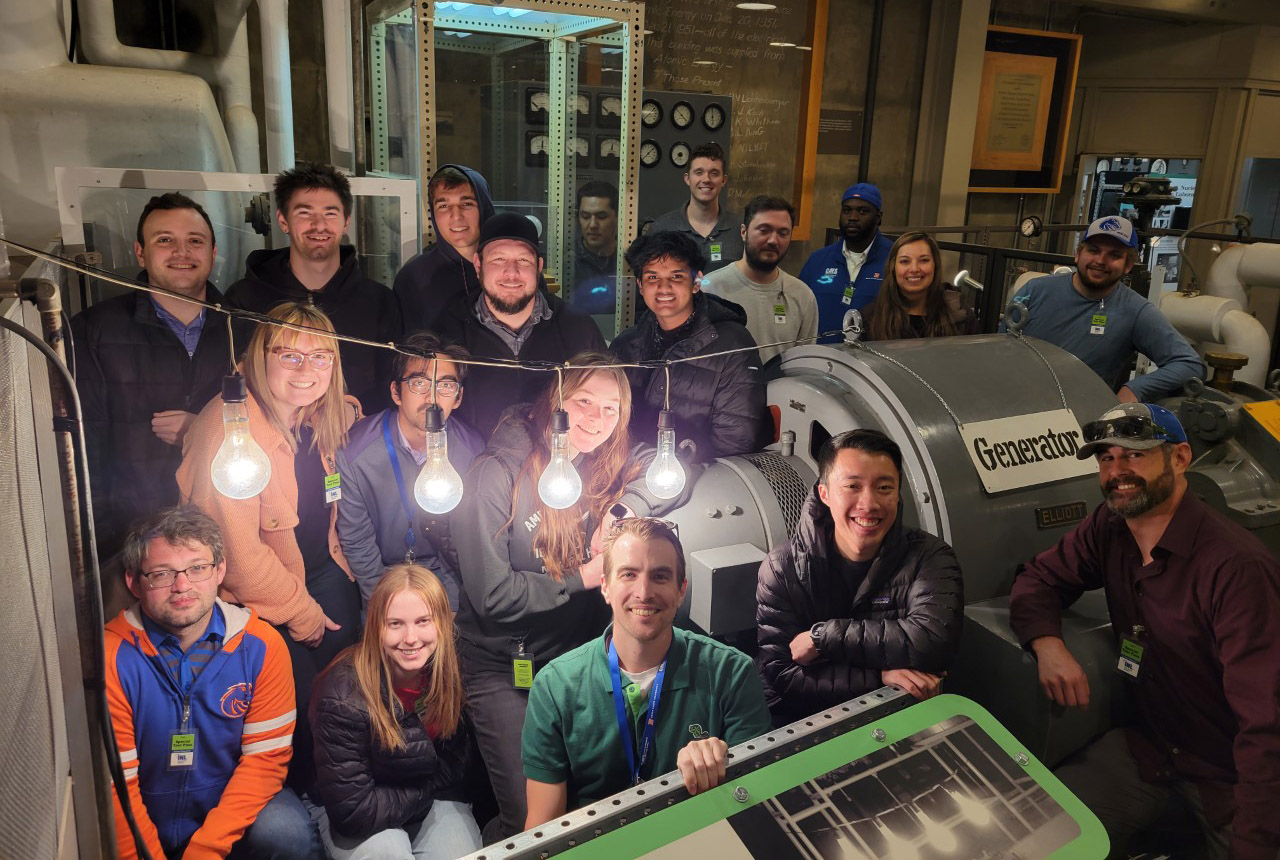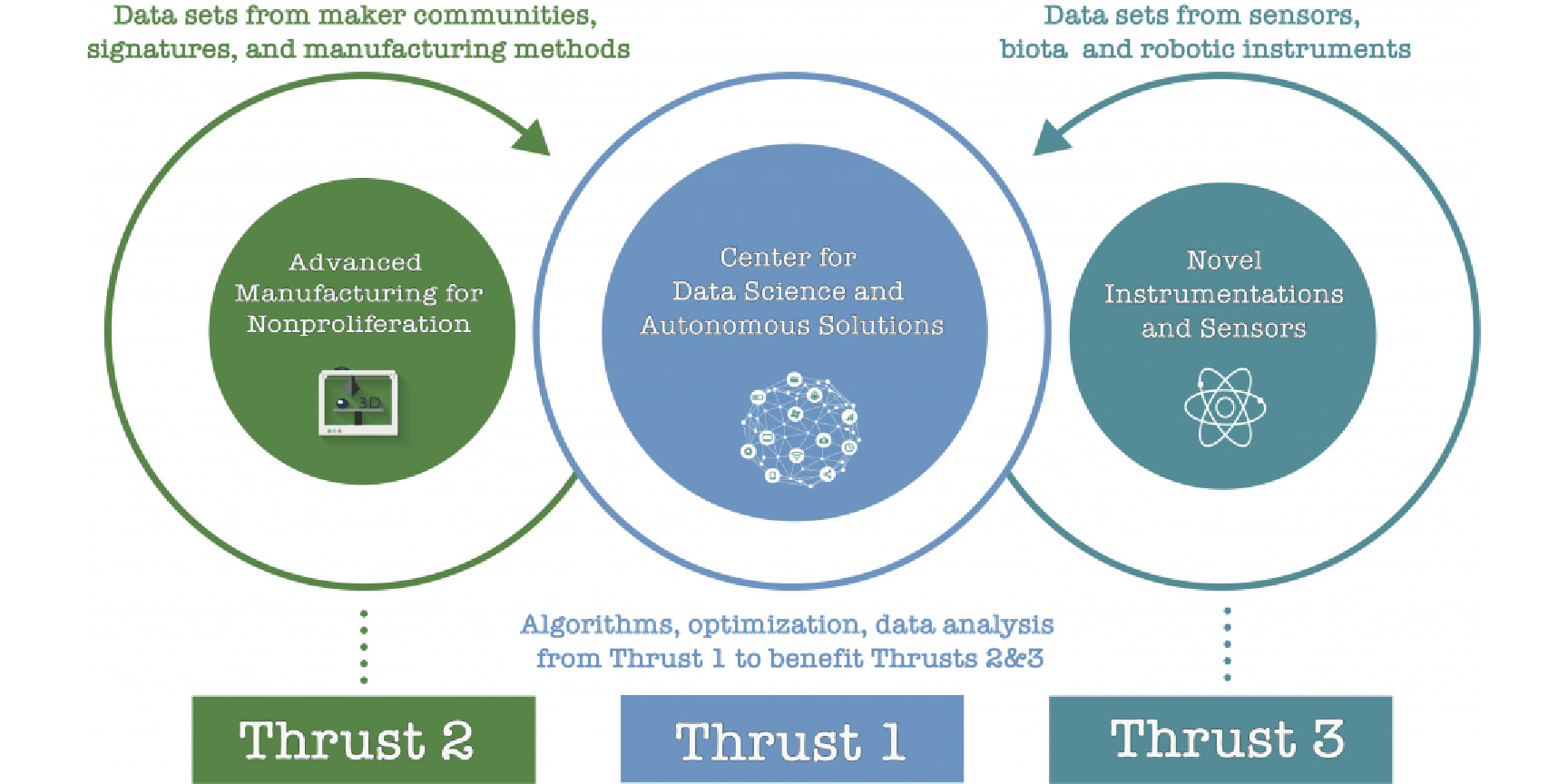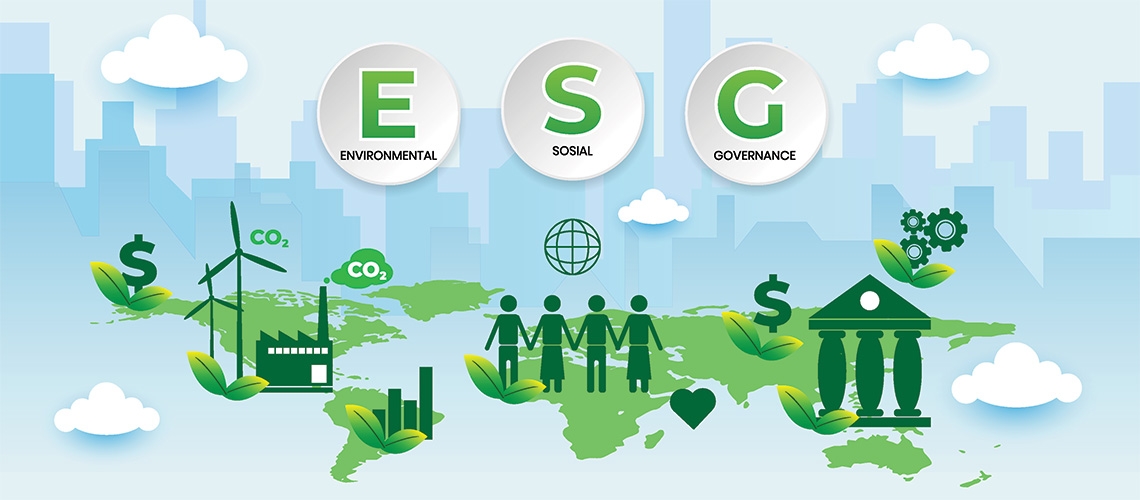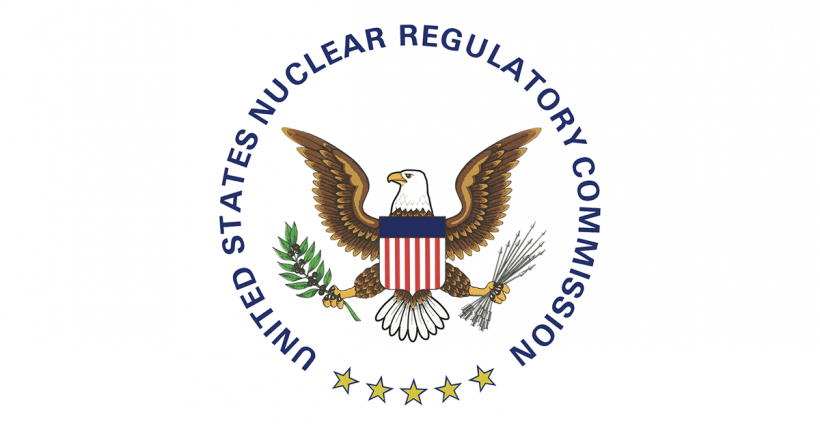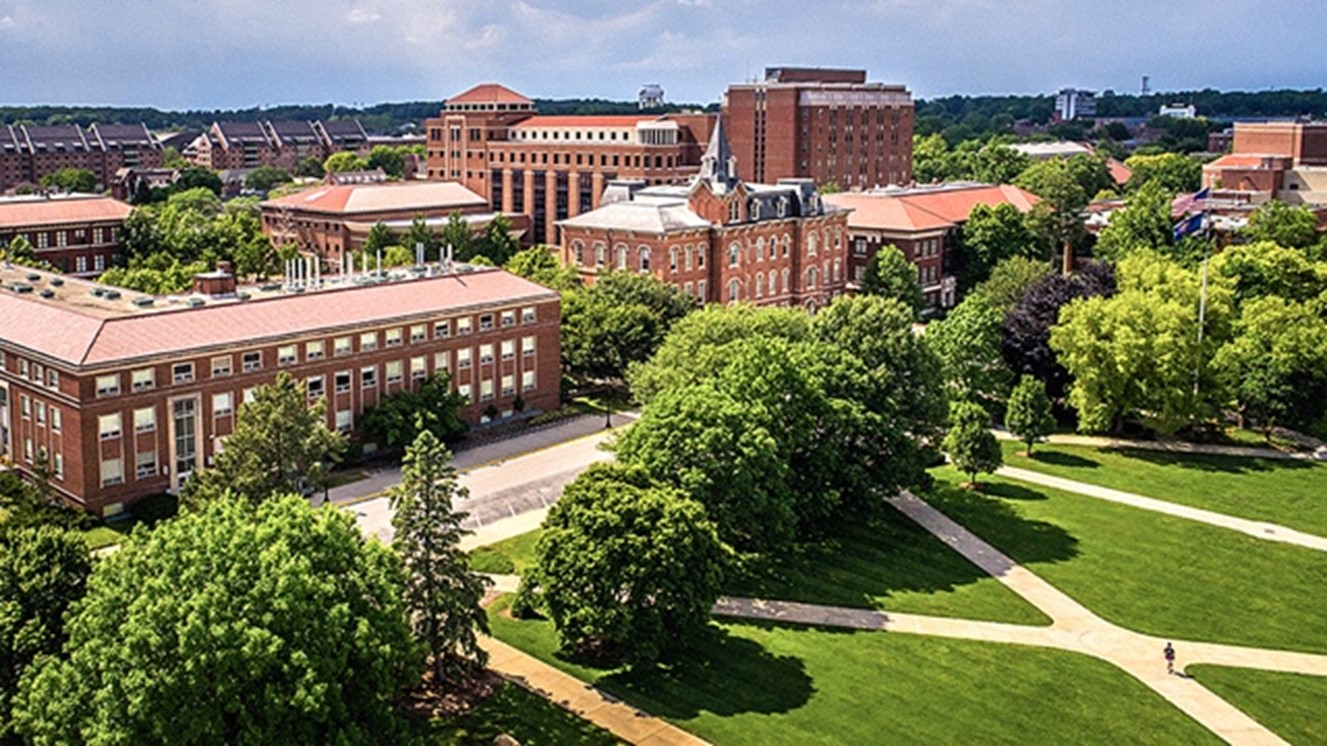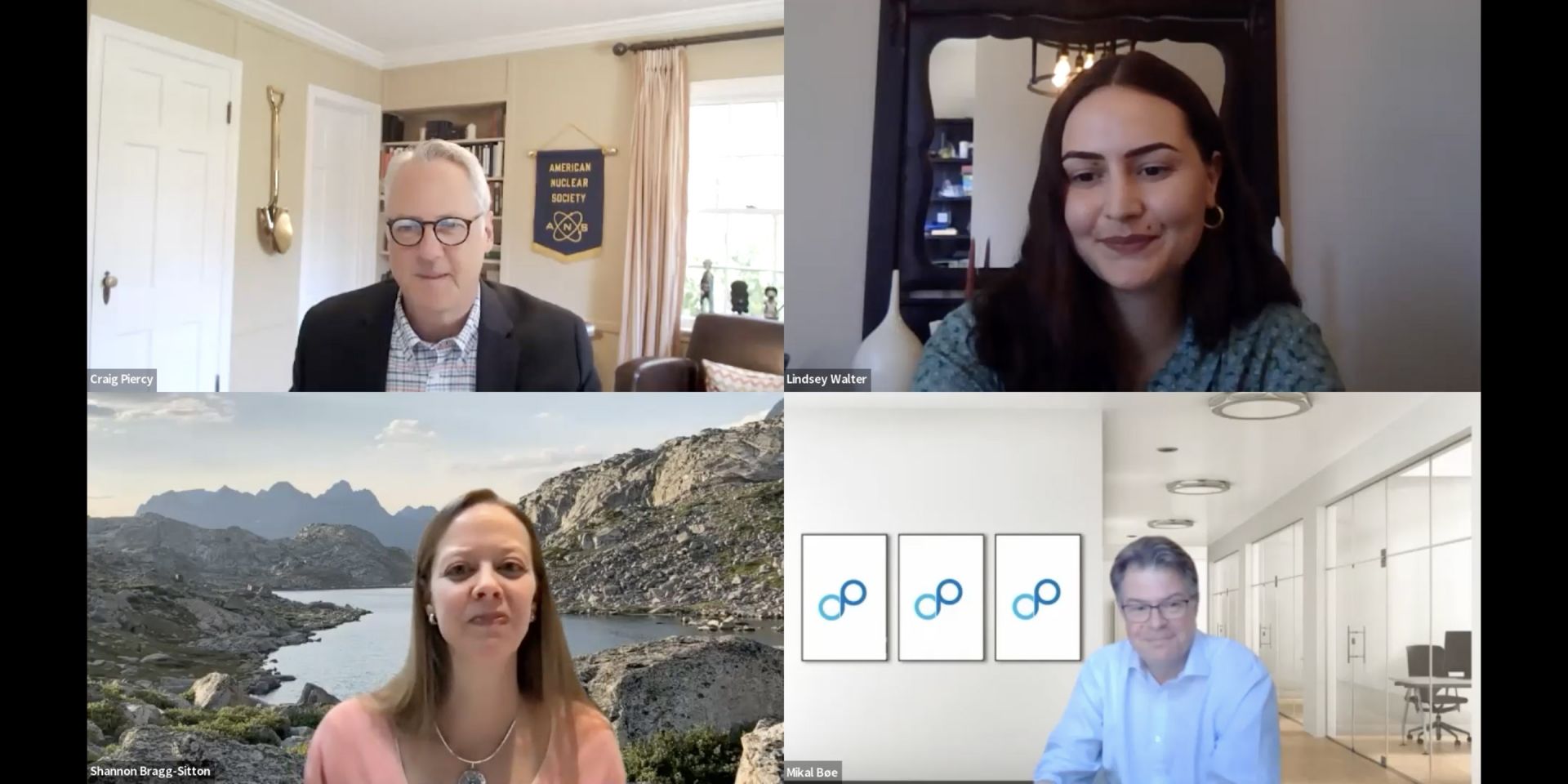Boise State University students visiting the site of the first nuclear-generated electricity in 1951 at EBR-I. (Photo: BSU)
Earlier this month, the ANS Board of Directors approved the creation of two new student sections—Reed College in Portland, Ore., and Boise State University in Boise, Idaho.
ANS’s student sections represent the next generation of nuclear—they are critical to the Society’s goal of aiding the next generation in their pursuit of advancing, fostering, and promoting the development and application of nuclear sciences and technologies for the benefit of humankind. Student sections provide students with the knowledge, tools, and opportunities required to achieve success in or out of the nuclear field.
Purdue University, in West Lafayette, Ind.
Purdue University and Duke Energy have announced that they plan to jointly explore the feasibility of using advanced nuclear energy to meet the university’s long-term energy needs, “a move that may be unprecedented for a college campus.” A small modular reactor could meet the current and future needs for Purdue’s West Lafayette, Ind., campus, as well as provide excess power to the state’s electric grid, according to a joint press release.
A screen shot from the ANS webinar, “A Reactor Physicist’s Explanation of Chernobyl,” featuring Christopher Perfetti (inset). (Source: ANS)
On the 36th anniversary of the Chernobyl nuclear accident, the American Nuclear Society held the webinar, “A Reactor Physicist’s Explanation of Chernobyl,” led by Christopher Perfetti, an assistant professor in the Nuclear Engineering Department at the University of New Mexico. (Here we use the more common Russian spelling of Chernobyl, rather than the Ukrainian spelling, Chornobyl.)
Earth Day webinar participants were (clockwise from top left) Craig Piercy, Lindsey Walter, Mikal Bøe, and Shannon Bragg-Sitton. (Image: ANS)
The American Nuclear Society hosted the webinar “Earth Day: Reflections on the Future of Clean Energy” on April 22. Expert panelists discussed the best options for achieving emissions-free objectives, including goals in energy production, industrial activities, and transportation.



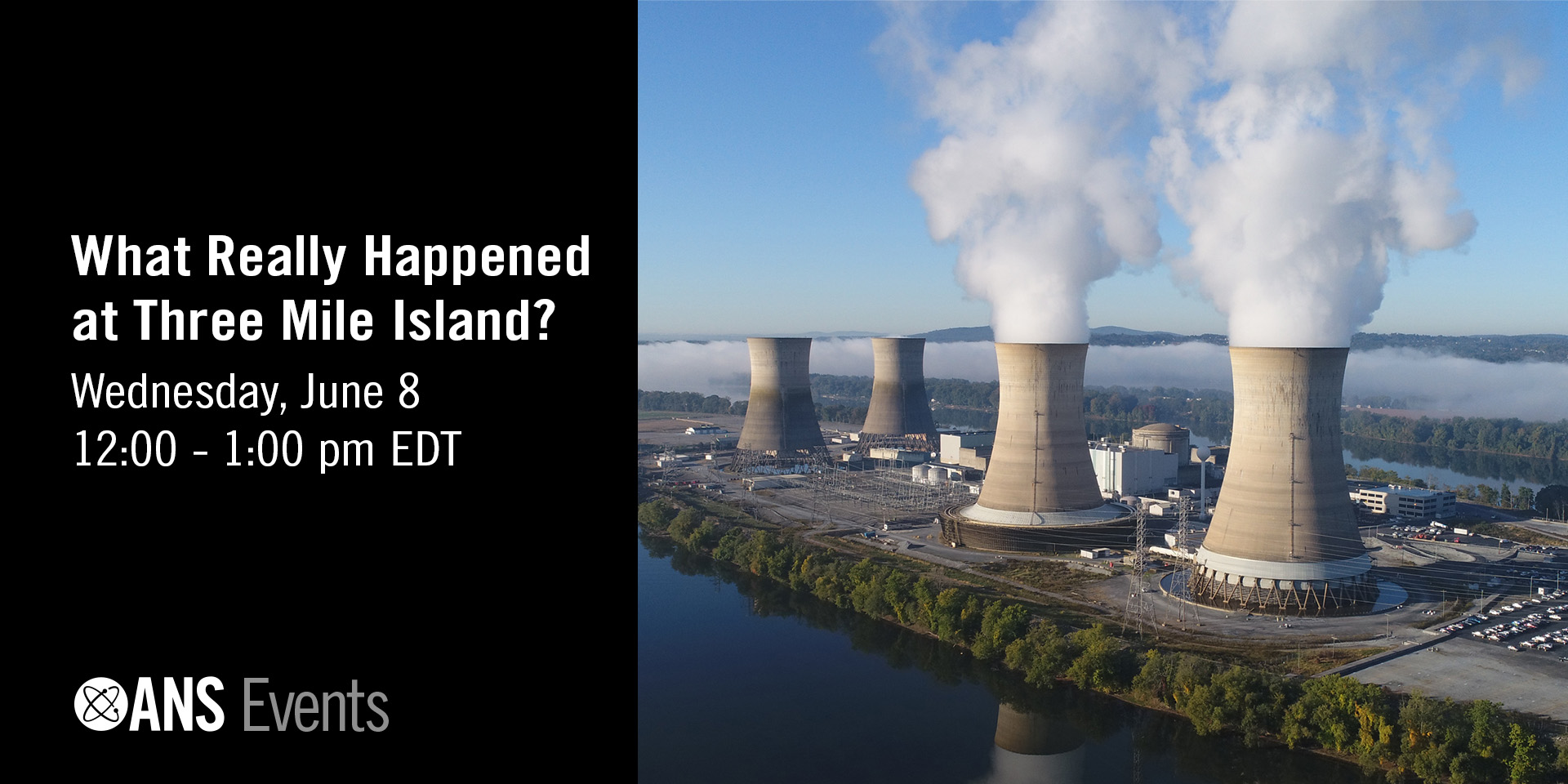
 The International Atomic Energy Agency’s Division of Nuclear Security is inviting female students who are enrolled in master’s programs in nuclear security to apply for internships in the IAEA
The International Atomic Energy Agency’s Division of Nuclear Security is inviting female students who are enrolled in master’s programs in nuclear security to apply for internships in the IAEA 